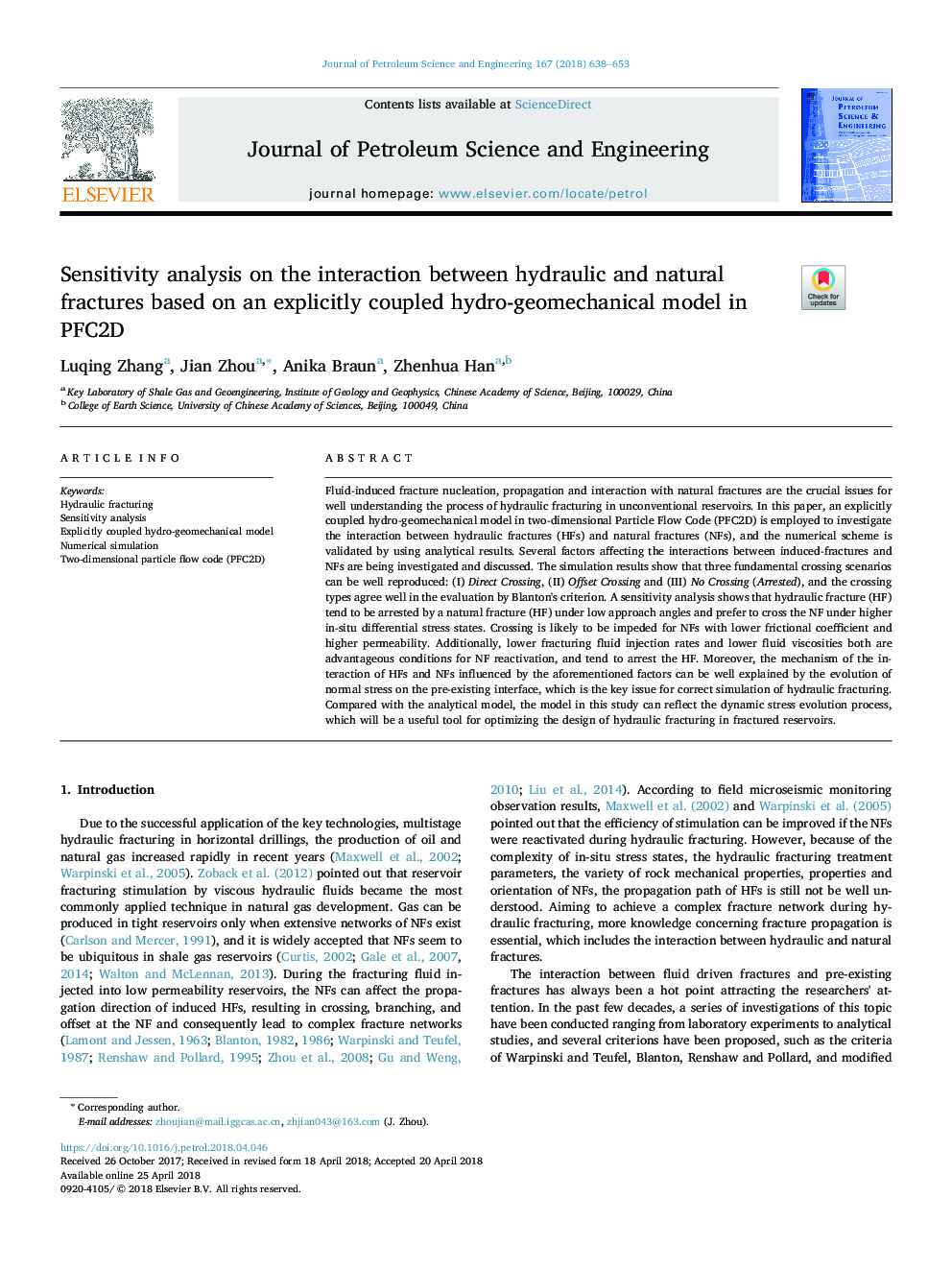| کد مقاله | کد نشریه | سال انتشار | مقاله انگلیسی | نسخه تمام متن |
|---|---|---|---|---|
| 8124939 | 1522774 | 2018 | 16 صفحه PDF | دانلود رایگان |
عنوان انگلیسی مقاله ISI
Sensitivity analysis on the interaction between hydraulic and natural fractures based on an explicitly coupled hydro-geomechanical model in PFC2D
دانلود مقاله + سفارش ترجمه
دانلود مقاله ISI انگلیسی
رایگان برای ایرانیان
کلمات کلیدی
موضوعات مرتبط
مهندسی و علوم پایه
علوم زمین و سیارات
زمین شناسی اقتصادی
پیش نمایش صفحه اول مقاله

چکیده انگلیسی
Fluid-induced fracture nucleation, propagation and interaction with natural fractures are the crucial issues for well understanding the process of hydraulic fracturing in unconventional reservoirs. In this paper, an explicitly coupled hydro-geomechanical model in two-dimensional Particle Flow Code (PFC2D) is employed to investigate the interaction between hydraulic fractures (HFs) and natural fractures (NFs), and the numerical scheme is validated by using analytical results. Several factors affecting the interactions between induced-fractures and NFs are being investigated and discussed. The simulation results show that three fundamental crossing scenarios can be well reproduced: (I) Direct Crossing, (II) Offset Crossing and (III) No Crossing (Arrested), and the crossing types agree well in the evaluation by Blanton's criterion. A sensitivity analysis shows that hydraulic fracture (HF) tend to be arrested by a natural fracture (HF) under low approach angles and prefer to cross the NF under higher in-situ differential stress states. Crossing is likely to be impeded for NFs with lower frictional coefficient and higher permeability. Additionally, lower fracturing fluid injection rates and lower fluid viscosities both are advantageous conditions for NF reactivation, and tend to arrest the HF. Moreover, the mechanism of the interaction of HFs and NFs influenced by the aforementioned factors can be well explained by the evolution of normal stress on the pre-existing interface, which is the key issue for correct simulation of hydraulic fracturing. Compared with the analytical model, the model in this study can reflect the dynamic stress evolution process, which will be a useful tool for optimizing the design of hydraulic fracturing in fractured reservoirs.
ناشر
Database: Elsevier - ScienceDirect (ساینس دایرکت)
Journal: Journal of Petroleum Science and Engineering - Volume 167, August 2018, Pages 638-653
Journal: Journal of Petroleum Science and Engineering - Volume 167, August 2018, Pages 638-653
نویسندگان
Luqing Zhang, Jian Zhou, Anika Braun, Zhenhua Han,